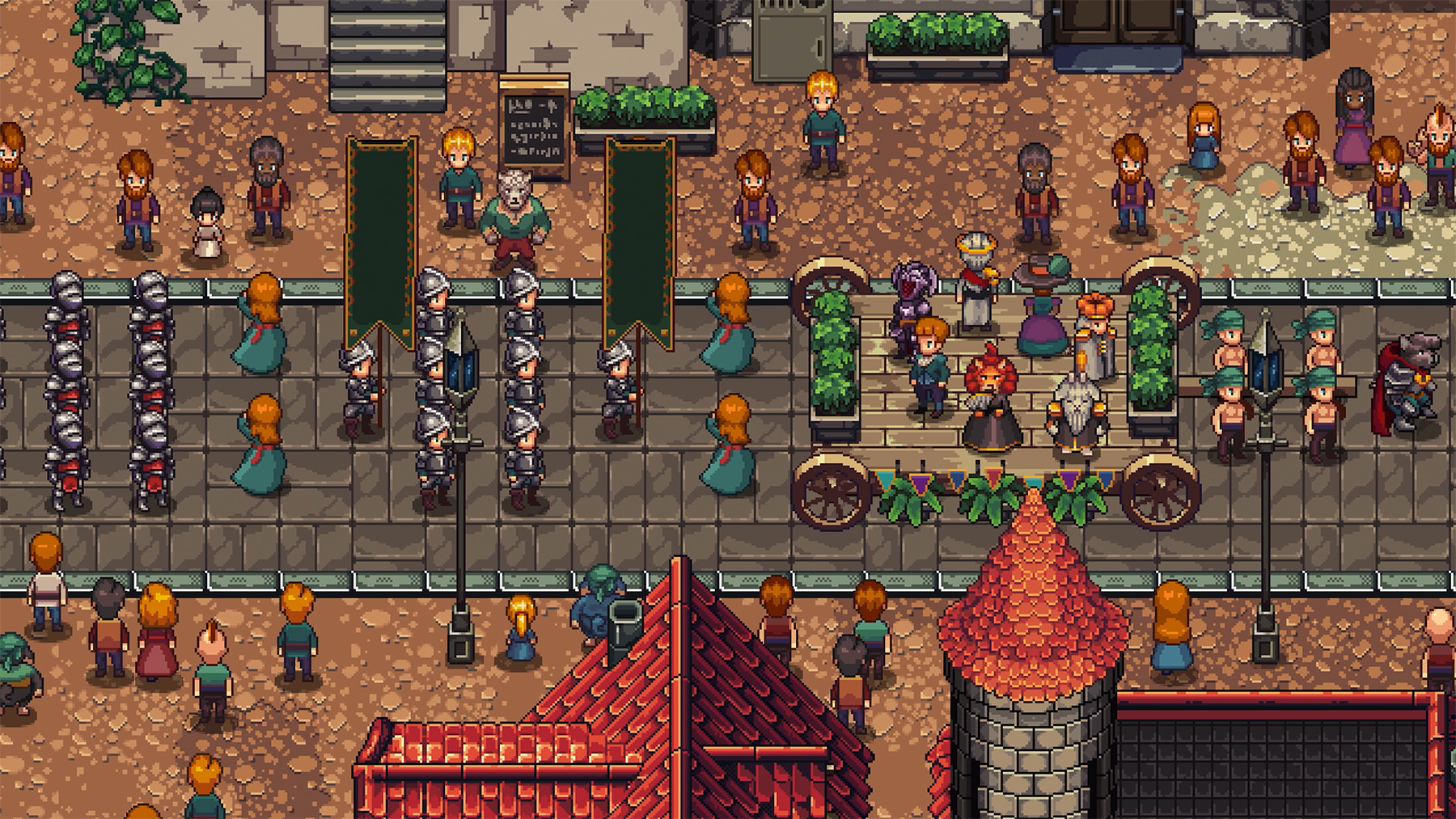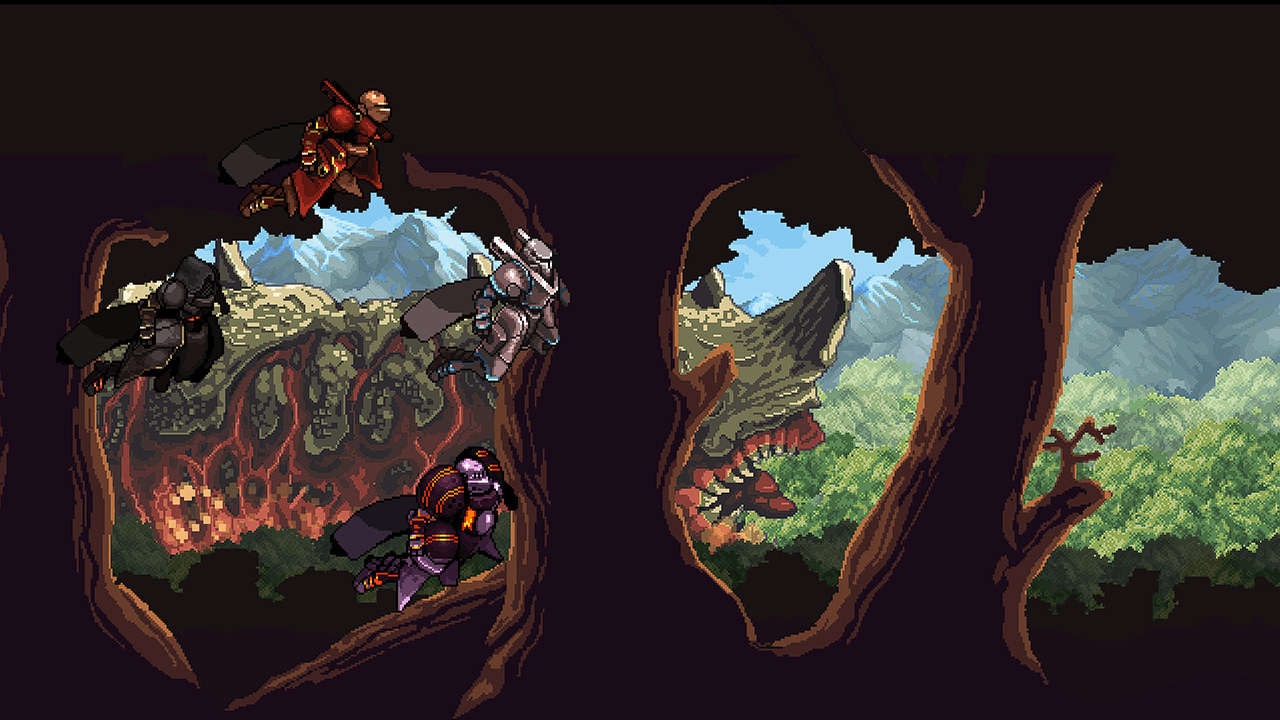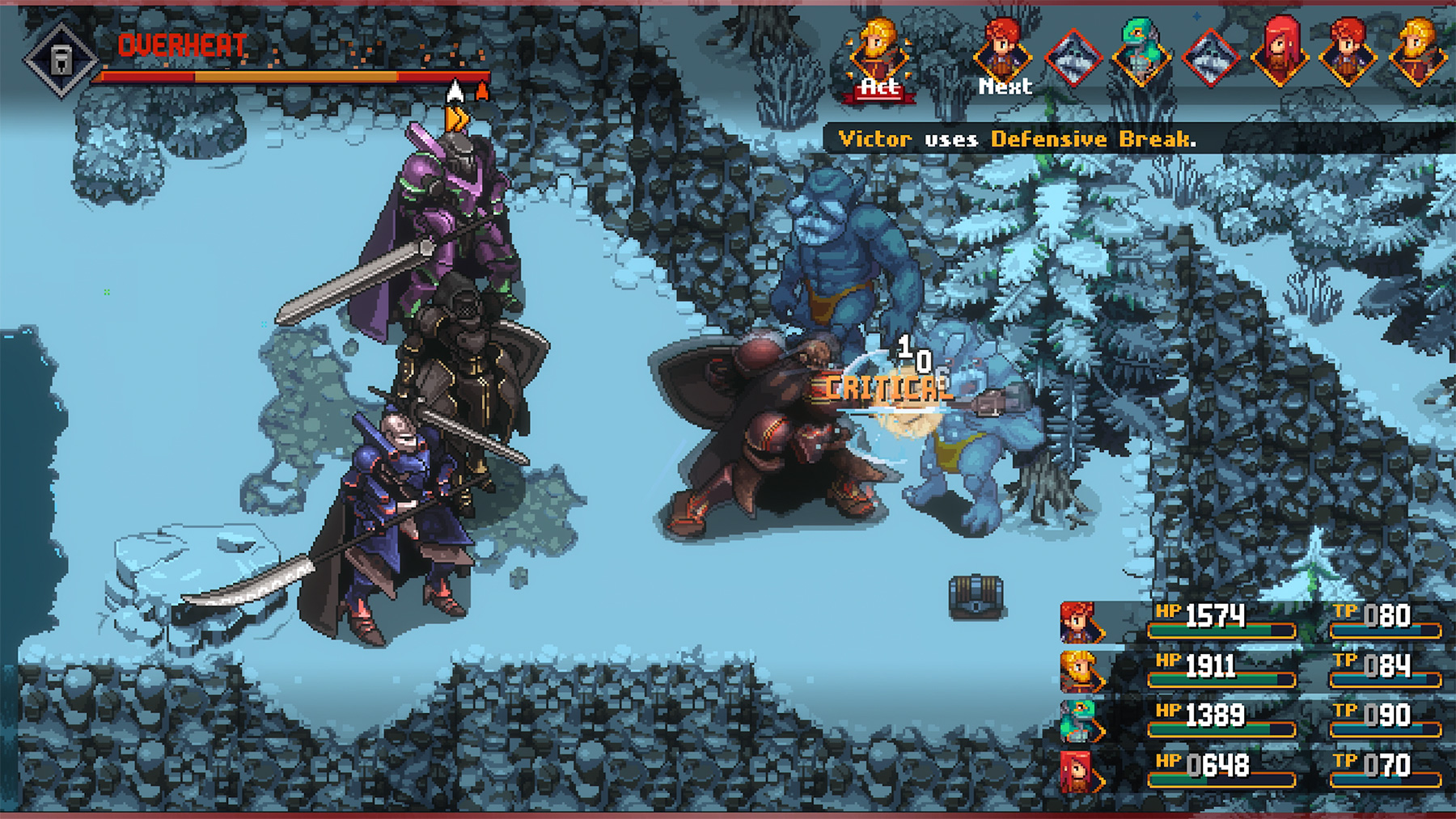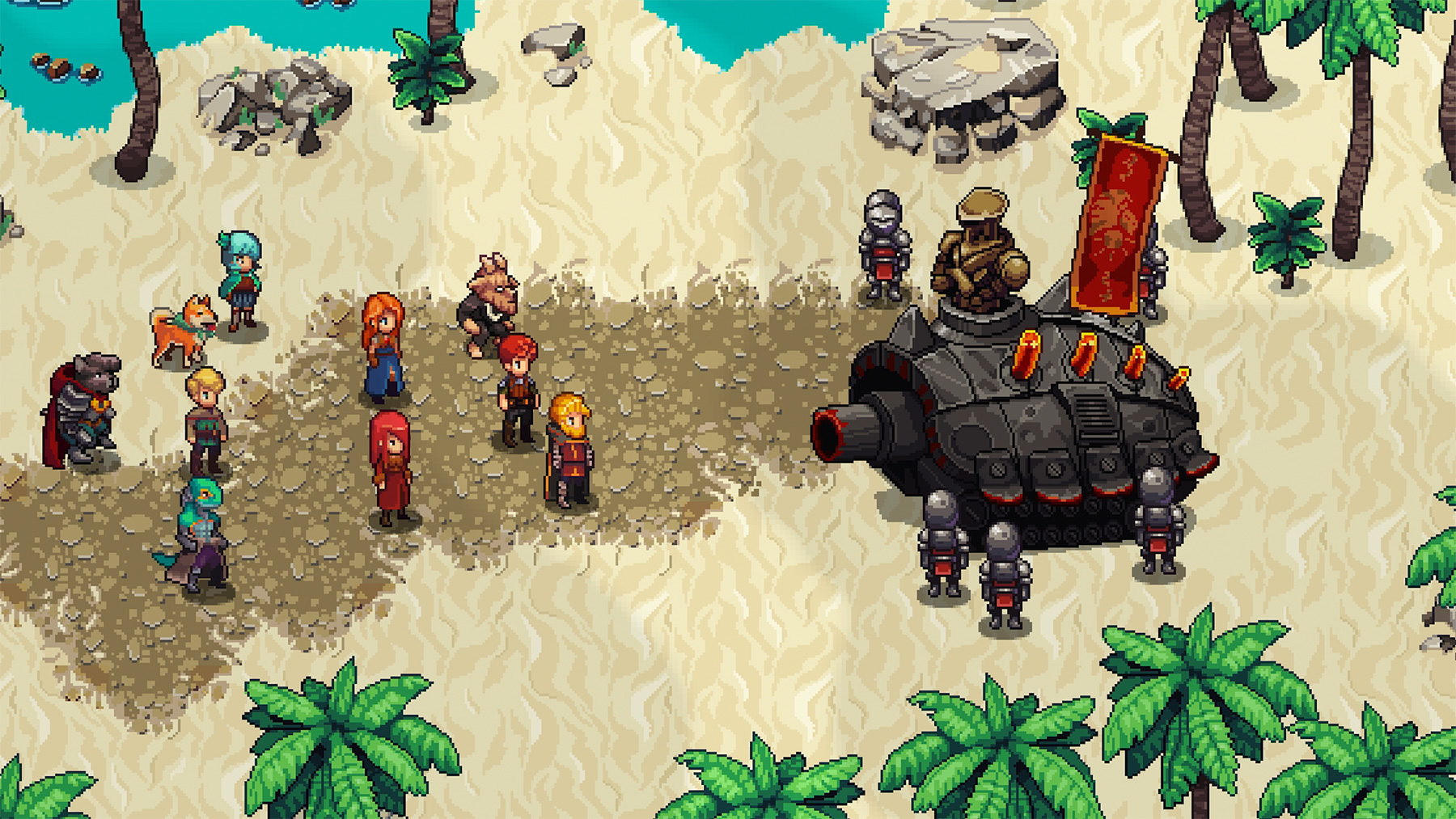By now, you’ve probably heard the praises of Matthias Linda’s nostalgia JRPG, Chained Echoes. Believe every word of it. This is a great game that succeeds in everything it tries to accomplish.
Chained Echoes is clearly inspired by many of the genre’s classics, but it doesn’t feel like a simple homage, so naming it here does a disservice to this game. In many cases it is actually better.
The game literally starts with a bang. Players rush into battle on the continent of Valandis, but early heroes aren’t eager participants. Carelessly unleashing devastating weapons on the battlefield, their powers are so powerful that they can end wars quickly. However, the peace that followed is only a veil for those who wish to harness the power of their weapons to actually win wars, rather than abandon them.
Of course, this means that you’ll immediately control the party, which includes participants from both sides as well as the typical outside observers. Don’t think you can figure out how things are going because you keep things fresh by constantly changing people. Most major decisions about the game seem to be story based. So that means you get his JRPG that’s great at storytelling. Unfortunately, it’s a missing element these days. The side quests feel important to the story as well as add on. Also, if you go off the beaten path to do your exploration, the game will push you back as needed.
Everything in Chained Echoes delivers pacing, right down to the ability to save your game wherever you are. No need to go backwards or forwards when you need to stop playing. When backtracking, you don’t have to fight the same monsters over and over unless you save in the middle of an area. In this case, it is often returned to his point of entry with the monster returning. However, larger world areas are displayed in a smaller grid to make it easier to work with.

The path through these areas is mostly straight, but a quick detour often leads to treasure. This is important as Chained Echoes’ robust upgrade system is powered by the materials you find. Loot can only be sold, but selling certain items unlocks “deals” that provide key elements of upgrades. Both armor and weapons can be upgraded with slots that insert materials to enhance abilities (strong attacks against certain enemy types, enhanced abilities with elemental attacks, increased health, etc.). These enhancements can only be made at the Foundry, making it very important to prepare your team for the upcoming battles. . Plus, sometimes you optimize your weapon to get something better in a matter of minutes. You can remove enhancements, but there are limits to how often you can combine them for best effect.
However, not all upgrades are tied to loot. The character herself gets skill points that she can assign, unlocking more as she progresses. This allows you to use your party members however you like, but it also affects the flow of battle. Do you need to boost your magic attacks or boost your defenses? Is it worth boosting your defenses against nasty enemy types when you’re fighting less enemies? I especially like comboing between party members was. For example, I gave one character an attack that paralyzes enemies, and another the ability to do three times as much damage to paralyzed enemies as she does. There are many options like this, and when you finally think you’ve figured things out, the game introduces mechs to start over.

No matter how you prepare for battle, it’s very exciting. This is mainly due to the overdrive system. Each move increases or decreases your Overdrive meter, which affects your combat power. Start with a yellow where things are pretty standard. Attacks deal more damage as you move towards the green. Pushing too far into the deficit undermines both attack and defense. Each attack raises the meter, but there are certain moves that can lower the meter again. You have to keep the meter green, so you have to swap characters that can raise and lower the meter as needed. This means you can’t use the same character’s attack multiple times. It’s a great system that keeps combat exciting while forcing everyone to use it. You may find that each character chooses a skill specifically to help control the meter, so it also affects their skill set.

There’s a lot to consider, but even the toughest fights are manageable. I’ve only lost all of my party members a few times, at which point I have the option to load my last save or start over. The latter , you can try adjusting your party settings first to see if that helps. Please (some must be won to progress). And once you go into battle, you can get away with most enemies if things go wrong. This is no coincidence either. If you run, you run, and you will not be punished for doing so.
My minor issues with Chained Echoes were mostly related to exploration. The visuals of the world are amazingly detailed and colorful, but the boundaries are hard to detect. I spent a lot of time pushing invisible walls to see if there was a place to get through. In some areas you will have to go back and forth several times to get there. Certain areas required activating pathways that were not normally visible, requiring a lot of backtracking just to see what had opened. doesn’t show character stats, so you’ll have to turn the UI back on to see who needs it most. But it’s all lackluster, and the rest of the game is so fast-paced that it’s easy to miss a few issues.
Chained Echoes was the last game I completed for 2022 and it was a great way to end the year. If you haven’t played yet, it’s a great way to start 2023.

